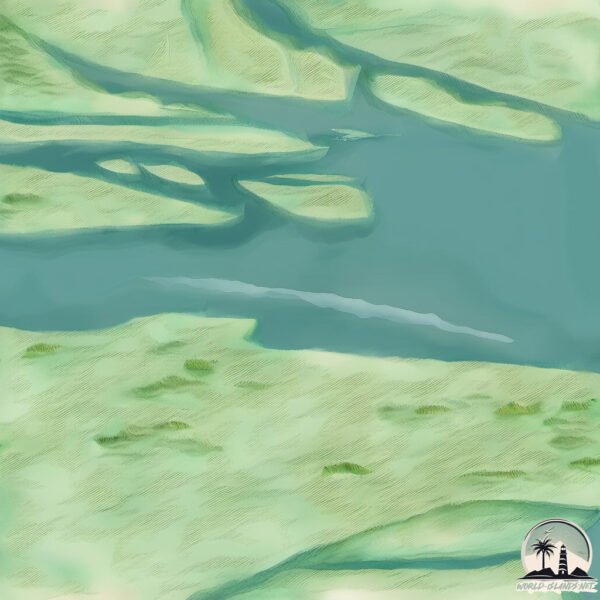Vodnitskiy

Welcome to Vodnitskiy, a Polar island in the Kara Sea, part of the majestic Arctic Ocean. This guide offers a comprehensive overview of what makes Vodnitskiy unique – from its geography and climate to its population, infrastructure, and beyond. Dive into the details:
- Geography and Size: Explore the island’s size and location.
- Climate and Weather: Weather patterns and temperature.
- Topography and Nature: Uncover the natural wonders of the island.
- Infrastructure and Travelling: Insights on reaching, staying, and making the most of your visit.
- News and Headlines: Latest News.
Geography and size of Vodnitskiy
Size: 2.494 km²
Coastline: 23.3 km
Ocean: Arctic Ocean
Sea: Kara Sea
Continent: Europe
Vodnitskiy is a Small Island spanning 2.5 km² with a coastline of 23.3 km.
Archipel: –
Tectonic Plate: Eurasia – One of the world’s largest tectonic plates, the Eurasian Plate covers a significant portion of Europe and Asia. It’s characterized by diverse geological features, including the Ural Mountains, the European Plain, and the Himalayas formed from its collision with the Indian Plate.
The geographic heart of the island is pinpointed at these coordinates:
Latitude: 73.89546461 / Longitude: 86.9434614
Climate and weather of Vodnitskiy
Climate Zone: Polar
Climate Details: Tundra
Temperature: Cold
Climate Characteristics: The tundra climate features long, extremely cold winters and short, cool summers. Vegetation is limited to mosses, lichens, and small shrubs due to the low temperatures and short growing seasons. Biodiversity is low, but some specialized species thrive.
Topography and nature of Vodnitskiy
Timezone: UTC+08:00
Timezone places: Australia/Perth
Max. Elevation: -9 m
Mean Elevation: -10 m
Vegetation: Herbaceous Cover
Tree Coverage: 55%
The mean elevation is -10 m. Remarkably, this unique island barely emerges above the sea level, showcasing nature’s fascinating interplay with the ocean. The island is characterized by Plains: Flat, low-lying lands characterized by a maximum elevation of up to 200 meters. On islands, plains are typically coastal lowlands or central flat areas.
Dominating Vegetation: Herbaceous Cover
Comprising mainly of grasses, herbs, and ferns, these areas are common in prairies, meadows, and savannas, and can vary widely in species composition. Vodnitskiy has a tree cover of 55 %.
Vegetation: 2 vegetation zones – Low Diversity Island
Islands with two distinct vegetation zones offer slightly more ecological variety. These zones could be due to differences in elevation, moisture, or other environmental factors. While still limited in biodiversity, these islands may offer a contrast between the two zones, such as a coastline with mangroves and an inland area with grassland.
Infrastructure and Travelling to Vodnitskiy
Does the island have a public airport? no.
There is no public and scheduled airport on Vodnitskiy. The nearest airport is Norilsk-Alykel Airport, located 509 km away.
Does the island have a major port? no.
There are no major ports on Vodnitskiy. The closest major port is DUDINKA, approximately 506 km away.
The mean population of Vodnitskiy is per km². Vodnitskiy is . The island belongs to Russia.
Continuing your journey, Rogozinskogo is the next notable island, situated merely km away.
Russia is classified as Emerging region: BRIC: Brazil, Russia, India, and China – Economies noted for their rapid growth and increasing influence on global affairs. The level of income is Upper middle income.
News – Latest Updates and Headlines from Vodnitskiy
Stay informed with the most recent news and important headlines from Vodnitskiy. Here’s a roundup of the latest developments.
Please note: The data used here has been primarily extracted from satellite readings. Deviations from exact values may occur, particularly regarding the height of elevations and population density. Land area and coastline measurements refer to average values at mean high tide.
